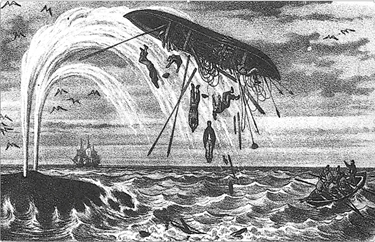Captain Barney Green’s House: 172 South Main Street, Southampton
- Tom Edmonds

- Sep 20, 2022
- 2 min read

This distinctive mansion, with a Second Empire-style Mansard roof, was built in 1871 or 1872 by whaling Captain Barney Green. It was previously home to Southampton’s pioneering Jessup family between 1648 until 1810 when Silvanus Raynor purchased the property. In 1842 Albert Foster owned the lot until 1863 when it was purchased by Captain Green.
Captain Green spent 30 years in the whaling industry. On his final journey he was thrown into the air by a whale and landed on the loggerhead sustaining sever injuries.
Image of Capt. Barney Green and an illustration of a whaling adventure
In 1870 Green retired to open his modest home to boarders, like his neighbors, to accommodate the rapidly growing Summer Colony of New Yorkers who came to Southampton for their health and to escape the City’s heat.
He proved genial and popular as a host. He used his accumulated wealth from whaling to tear down the old house and build a stylish boarding house he called “Four Acres.” An 1877 Long Island Rail Road brochure mentions “Capt. B.R. Green, who accommodates about 40 guests.” A look at the guest books from those years (now lost) would no doubt reveal prominent families visiting Southampton during its Gilded Age.

The house, still known today as “Barney Green’s House,” later passed to Stephen Peabody, a wealthy Boston industrialist in the early 20th century, who made changes to the interior and removed the 3rd floor of the turret. Many of its original historic details remain including the leaded glass windows, coffered ceiling, porte cochere, and covered verandas.
Peabody’s family eventually moved one block south to develop a campus of five buildings on Lake Agawam, one of which is “Halsey House & Garden,” today managed by the Southampton History Museum.
A water pitcher from Barney Green’s House, when it was used as a boarding house, is in the permanent collection of the Southampton History Museum. A photograph of a guest room at the nearby Scotch Mist Inn may have looked similar at Green’s establishment.
A pitcher with "B.G. Green" and an interior image from the homes past










